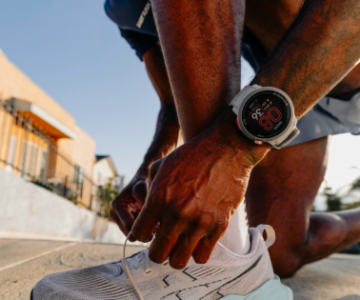The terminology surrounding running shoes can be overwhelming, especially when discussing the complexities of heel to toe drop and stack height. In recent years, these two factors have become central in choosing the right pair of shoes for your running needs. So, what exactly do these terms mean, and how do they affect your running experience? Let’s break it down.
What is Stack Height?
Stack height refers to the total thickness of cushioning in a running shoe, from the inner sole to the outsole. This measurement includes the foam layers that provide comfort and support. The concept of stack height gained major attention when Eliud Kipchoge’s sub-2-hour marathon achievement showcased the benefits of deep cushioning combined with innovative technology. In response, World Athletics introduced regulations, setting a 40mm limit on the stack height for elite road racing shoes.
Prior to this, stack height was less commonly discussed in precise terms. It was enough to simply look at the shoe to determine its cushioning. However, with technological advancements and the increasing popularity of high-cushion shoes, stack height has become a defining feature in running shoe selection.
What is Heel to Toe Drop?
Heel to toe drop, also known simply as “drop,” refers to the difference in height between the heel and the forefoot of a running shoe. It is the measurement of the slope that runs from the back of the shoe to the front. Traditionally, most running shoes featured a drop of around 12mm, though this can vary significantly across different models.
One point of confusion for many runners is the distinction between heel drop and stack height. Stack height is the total amount of cushioning, while drop specifically measures the difference in height between the heel and forefoot. This means that a shoe with a thick midsole doesn’t automatically imply a high drop.
Is Heel to Toe Drop Important?
While heel to toe drop is a key consideration for some, its importance can vary depending on individual running form and experience. Various studies have shown that the ideal drop for each runner is highly subjective. Factors like running style, foot strike, and muscle flexibility can all influence how the drop affects your running experience.
For instance, runners who primarily land on their heels may feel more comfortable in shoes with a higher drop, as this helps reduce the strain on their Achilles tendon. Conversely, midfoot or forefoot strikers might find a lower drop more natural.
How to Choose the Right Drop?
When switching to a shoe with a different drop, it’s essential to give your body time to adjust. If you currently run in a shoe with a higher drop, transitioning to a lower drop model might take some time. Your body will need to adapt, especially in the areas of calf and ankle strength.
If you’re new to a particular drop, it’s advisable to make gradual changes. For example, start with a mid-range drop (around 8mm) before progressing to a lower drop model. This approach helps avoid sudden changes in gait and reduces the risk of injury.
Shoe Types: Low to High Stack
Running shoes come in various categories depending on stack height and cushioning. The traditional running shoe has been classified as a medium stack, usually between 20mm and 25mm of cushioning. Low-stack shoes have less than 20mm of cushioning, while high-stack shoes feature more than 25mm, often reaching up to 30mm or more.
Maximalist shoes, which focus on providing as much cushioning as possible, are categorized as high-stack shoes, offering extreme comfort and shock absorption. These are ideal for long-distance runners or those seeking additional protection from impact forces.
Brand Variations in Stack Height and Drop
Different brands have their own approaches to stack height and drop:
- ALTRA: Known for zero drop or minimal drop shoes with mid to high stack heights.
- ASICS: Offers medium stack shoes with higher drops (10-12mm).
- Brooks: Known for medium to high stack shoes with moderate drops (10-12mm).
- Nike: Offers shoes with medium to high stack heights and varying drops (typically 10mm).
- HOKA: Famous for high to maximal stack heights with lower drops (4-5mm).
- Saucony: Offers medium stack shoes with moderate drops (8mm).
- New Balance: Features medium stack shoes with higher drops (10-12mm).
How Does Heel to Toe Drop Affect Running Speed?
Your running speed can influence how a particular drop feels. At slower paces, some runners naturally land on their forefoot, which may make a low drop feel more comfortable. As speed increases, many runners switch to a midfoot or heel strike, where a higher drop may provide more comfort and efficiency.
However, your unique gait and stride play a huge role in determining the best drop for you. Runners with a more neutral or forefoot strike may find less difference in the drop of their shoes, while heel strikers might notice a bigger impact when changing drops.
Heel to Toe Drop and Running Injuries
Heel to toe drop can also affect your injury risk. For example, a higher drop shoe is often recommended for those dealing with Achilles tendon issues. The added height reduces the strain on the Achilles during the initial contact phase of running.
On the other hand, a lower drop shoe may benefit runners suffering from conditions like runner’s knee, as it reduces the pressure on the knee by promoting a more natural running posture.
Final Thoughts
Understanding the relationship between stack height and heel to toe drop can help you make more informed choices when selecting running shoes. While these factors are crucial, they are only part of the equation. Comfort, fit, and how the shoe complements your running style should always be the priority. When changing your shoes, take your time to adapt to new drops or cushioning, and always listen to your body to avoid injury.





